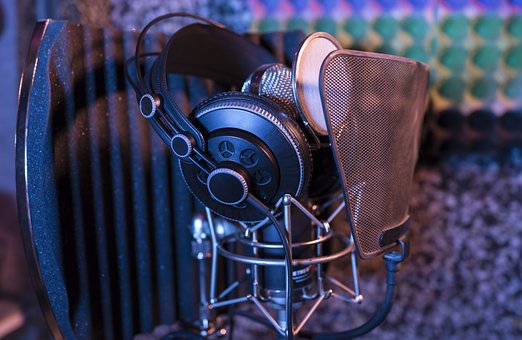You’ve probably heard of the term “condenser microphone” before if you’ve been working as a content creator. It’s common to interchange the term “sounds excellent” with “condenser mic.” That is mainly because a high-quality condenser microphone is essential for professional-sounding audio and vocal recordings.
You may wonder, “But what exactly is a condenser microphone?” Is the quality of sound it produces superior to that of other microphones? When compared to dynamic microphones, do condenser mics offer any tangible benefits? If that’s the case, how exactly does a condenser microphone work, and what makes it superior to a dynamic mic in terms of sound quality? Let’s dive deeper into the main advantages of condenser microphones and see if we can clarify some of the mysteries around why they are popular.
Table of Contents
Better Quality of Sound
The sound quality of a condenser microphone is higher than that of other microphones, which is one of the best condenser microphones. Because of their excellent frequency response and ability to pick up subtle nuances in the audio stream, condenser microphones are preferable. Furthermore, they are less likely to distort or become noisy during recording, making them perfect for use in a recording studio or on stage.
A condenser mic is an excellent option if you want your recordings to sound like they were made in a studio. Additionally, condenser mics are frequently employed in broadcast applications due to their clear and precise sound. They are also helpful for recording human voices for voice-overs or in interviews because they can pick up on subtlety in speech.
Fast Transient Response
In addition to the diaphragm’s properties, which determine frequency response and sensitivity, the microphone’s capacity to respond to sound waves, the so-called “transient response” characteristics, is one of the most critical factors influencing timbre. The overall diaphragm weight is the primary factor determining the transient response characteristics of a microphone—the heavier the diaphragm, the slower the response time.
The capacitive sound head is exceptionally lightweight and thin compared to conventional headphones. Due to its rapid transient response, the diaphragm can produce crystal-clear audio and video with impressive power and depth.
The capacitive type has superior timbre because the high pitch is delicate and crisp, and there is no sound staining or “box sound” in the middle or deep frequencies.
Highly Versatile
Condenser mics also have a wide range of applications, which is a significant benefit. They have multiple uses, including but not limited to audio recording and podcasting. Some things just can’t be done without a condenser mic.
They are also a great option when space is at a premium, such as in a home studio. Moreover, condenser microphones, in contrast to dynamic mics, are typically more portable and straightforward to set up due to their tiny size.
Minimal acoustic interference from finger touches
The quality of the sound is greatly affected by the user’s touch noise when using a handheld microphone due to the palm making contact with the microphone’s surface. That is especially true of wireless microphones with pre-amplifier circuits which is a significant undertaking.
Goose feathers, like a copper plate, fall to the floor, yet the sound is barely audible for the feathers while it is very loud for the plate, demonstrating that the lighter substance has less impact than the heavier. This is precisely the case with a condenser microphone, whose diaphragm is also relatively lightweight and naturally possesses the excellent properties of “ultra-low contact noise;” a dynamic microphone’s diaphragm is typically much heavier.
Produces Vocals with High Authenticity
Vocalists like condenser mics because of their natural tonality and clarity, making them a go-to for recording and performing. Whether in a recording studio or on stage, they capture every nuance of a singer’s performance.
In addition, acoustic instruments like guitars and pianos are frequently recorded with condenser microphones. These mics can better capture the subtleties of the instruments being recorded, resulting in a more complete and authentic sound.
Ideal for use with wireless microphones
Due to their high quality and versatility, condenser mics are widely used by audio engineers and musicians. Singing in public or doing karaoke at home with a wireless microphone has recently become popular worldwide. Capacitive audio can be produced solely using wireless microphones. Benefiting from the same features as condenser mics, it has risen to become the gold standard for high-quality recording in the digital audio era.
They record sound effects better
Because of their ability to record subtle sounds without distortion, condenser mics are also widely used by specialists in the field of sound effects. Whether you need to record Foley performances or ambient sounds, these mics will do the job perfectly.
Final Thought
Condenser microphones are a good choice if you need a device that can faithfully reproduce sound across a wide range of frequencies and pick up the faintest noises. Many different models exist; choose the one that best suits your needs and preferences after careful consideration. Best of luck with the recording!
In addition, acoustic instruments like guitars and pianos are frequently recorded with condenser microphones. These mics can better capture the subtleties of the instruments being recorded, resulting in a more complete and authentic sound.

